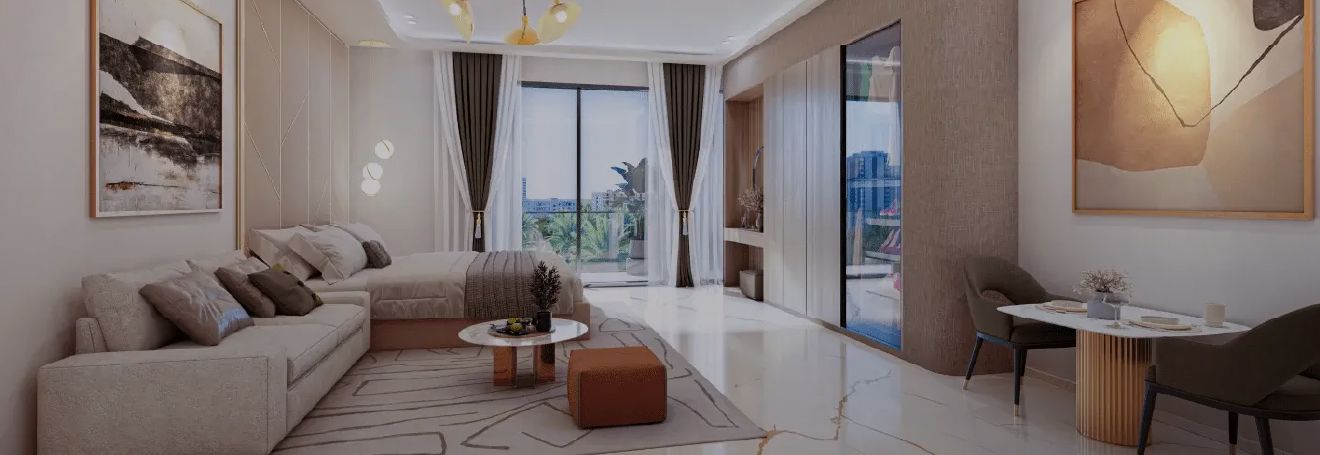Tranquil Developers builds with intention. As boutique property builders Dubai investors trust, our philosophy is simple: design with care, disclose with clarity, and deliver value over hype. If you’re considering Dubai’s booming market especially investor-favourite districts like Jumeirah Village Circle (JVC) understanding carpet area, built-up area, and super built-up area is the difference between a good purchase and a great one. In today’s competitive environment for real estate developers, precise definitions translate into fair pricing, better ROI calculations, and smoother resale planning. Below is your clear, practical guide.
Why Built-Up Areas matters to buyers and investors
- You pay for square feet; you live in carpet area. Pricing usually leans on bigger numbers; usage is always the smaller one.
- Financing, taxes, and yield depend on definitions. Lenders, valuers, and even municipal bodies reference different “areas” at different steps.
- ROI in JVC and similar districts is tight but strong. Cleaner understanding of areas → cleaner projection of rent per usable sq ft and truer yields often in the ~6%–8% range for mainstream apartments, depending on unit type and project specifics.
The three core area types explained
Carpet Area (Net Usable Space)
This is the space you can actually live in living, bedrooms, kitchen, bathrooms, internal passageswithin the inner walls. No external walls, no shafts, no exclusive balcony/terrace. RERA defines it formally as “the net usable floor area… excluding external walls, service shafts, exclusive balcony/veranda and open terrace,” while including internal partition walls. That legal definition is widely referenced across the industry for clarity.
Why it matters:
- Best benchmark for value-for-money and livability.
- Helps compare apples to apples across listings.
Quick rule of thumb: In many multi-family designs, carpet area is often ~70–85% of built-up, depending on layout efficiency. For deep dives, industry explainers from Housing.com are a helpful reference.
Built-Up Area (Carpet + Walls + Select Attachments)
Built-up = carpet area + wall thickness + exclusive balconies/terraces (where applicable). It’s always larger than the carpet. In Dubai, you’ll also see BUA (Built-Up Area) used in brochures and title documentation to sum all covered spaces within the external walls, including covered balconies and covered terraces.
Why it matters:
- Appears in many legal drawings and can influence service charges and planning.
- Higher than carpet, so price-per-sq-ft looks lower at first glance be careful.
Super Built-Up Area (Saleable/Chargeable Area)
Super built-up = built-up area + proportionate share of common areas like lift lobbies, corridors, staircases and, in some cases, clubhouses or indoor amenities allocated across all units. Pricing per sq ft is frequently quoted on this number because it spreads shared infrastructure fairly—but remember, you don’t live in all of it.
Why it matters:
- It’s often the basis of the advertised “price per sq ft.”
- The difference between carpet and super built-up is your loading factor (e.g., SBA = Carpet × (1+Loading)) a key input for comparing projects.
How these definitions translate to real value
1) Pricing clarity
- Carpet tells you the cost per usable sq ft.
- Built-up shows structural footprint.
- Super built-up spreads the cost of shared facilities.
Using all three correctly helps you strip away marketing noise and see the real unit economics. Independent explainers consistently advise comparing on carpet first, then reconciling the rest.
2) Financing alignment
Banks and valuers frequently centre their assessments on usable space. A realistic grasp of carpet vs built-up prevents overstating area during approvals or insurance estimates. Authoritative primers outline this buyer protection logic in detail.
3) Long-term ownership math
- Service charges often relate to the building’s common elements and total managed areas.
- Interiors and fit-outs are planned on carpet; it’s the canvas for everyday life.
- Resale conversations increasingly reference carpet for fairness and transparency. Good market guides reflect this shift.
Applying this in Dubai: especially JVC
As boutique property builders, Dubaibuyers gravitate toward. We plan with precision in communities where connectivity and absorption are strong. JVC has been a standout for transactions and renter interest, with consistent data showing it among the city’s hottest apartment markets. That momentum is supported by improving infrastructure and transport, most notably the Dubai Metro Blue Line now awarded and under development (30 km, 14 stations; AED 20.5B).
What this means for you:
- Rentability: robust demand signals support occupancy assumptions.
- Yield discipline: most investors model ~6–8% gross yields in mainstream segments; unit type, finish, and community amenities can push that range up or down.
- Future upside: rail connectivity historically compounds value in walkable radii of stations another reason Tranquil favours prime plots with multi-modal access as real estate developers focus on ROI and well-being.
Fast formulas you can use
- Carpet Area ≈ sum of usable rooms within the inner walls.
- Built-Up Area = Carpet + wall thickness + exclusive balcony/terrace.
- Super Built-Up Area = Built-Up + proportionate share of common areas
or SBA = Carpet × (1 + Loading Factor).
Independent buyer guides demonstrate these with easy examples to sanity-check brochures.
How Tranquil makes this effortless
- Transparent stacks: every brochure and agreement separates carpet, built-up, and super built-up clearly.
- Wellness-centric design: efficient cores and thoughtful planning reduce wasted circulation inside homes more carpet area where you live, less where you don’t.
- Prime-plot selection: proximity to arterials, parks, schools, and the upcoming Blue Line corridors underpins rental strength and resale confidence.
Human, boutique, and built with thought
At Tranquil Developers, we believe calm, wellness-centric homes and clear math can coexist. If you’re weighing studios, apartments, or villas in JVC and similar growth corridors, our team will walk you through each square foot carpet, built-up, and super built-up—so your decision is confident, transparent, and ROI-smart.
Ready to see plans, area break-ups, and projected yields for your shortlist?
Speak to a Tranquil Advisorwe’ll map the numbers to your lifestyle and investment goals, then short-list the right floor plates for you.
Disclaimer: Market stats, yields, and infrastructure timelines referenced here are based on third-party reports and official announcements available as of October 8, 2025 and may change. Please request the latest figures.
FAQs
1) Which measurement should I compare across projects?
Always start with carpet area to compare true livable space, then reconcile built-up and super built-up to understand pricing and shared amenities.
2) How do real estate developers decide the loading factor?
It reflects how much common area is allocated per unit based on the project’s design (cores, lobbies, amenity scale). There’s no single standard; many guides show 20–50% ranges depending on building typology.
3) Is the balcony included in the carpet area?
No. Balconies/terraces are outside carpet but usually inside built-up and thus part of super built-up too. Legal definitions support excluding exclusive balconies from carpet.
4) Why do some price sheets look cheaper per sq ft?
They’re often quoting the super built-up figure. Divide the total price by carpet area to see the effective cost per usable sq ft. Consumer explainers illustrate this gap clearly.
5) What’s a practical yield assumption in JVC today?
Market monitors and portal reports typically show mainstream apartments modelling around ~6–8% gross, varying by unit mix and finish quality. Validate with current listings and recent handovers.
6) How does the upcoming Dubai Metro Blue Line affect value?
Transport access usually boosts absorption and liquidity. The Blue Line is contracted (30 km, 14 stations), reinforcing connectivity across key corridors - supportive for long-run investor appeal.

Author: Dr. Sharad Nair
Co - Founder & Chairman, Tranquil Developers
